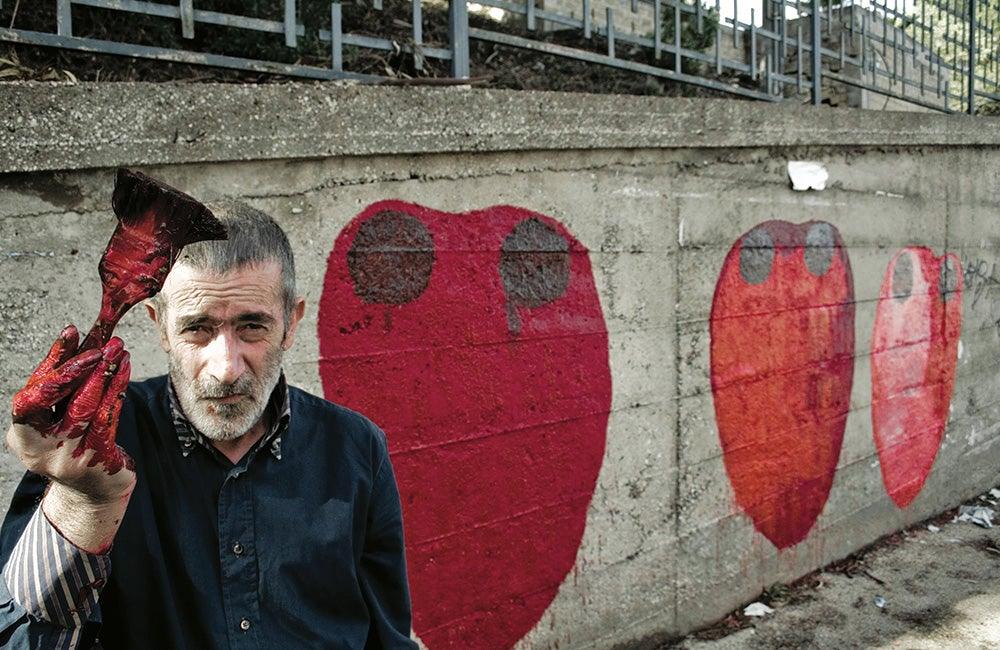First published: Fall 2009
There is a small coastal town in Sicily where hearts flourish in the streets, old songs are written on the walls, and here and there strange robot-like or serpentine creatures are painted on the age-stained houses. It is uncertain how long these coloured images will resist the weather, the salt and the whitewash, or whether indifference will prevail together with the desire to erase what is meaningless to so many.
Giovanni Bosco was born on March 3 1948 in Castellammare del Golfo in the province of Trapani, and spent most of his life there. The town was well known for its role in the history of the Italian-American Mafia. During his last years he began to draw in the street, oblivious to both traffic and passers-by. He was noticed by local artist Giovan Battista Di Liberti, who invited him into his studio-workshop and supplied him with felt pens and card. Bosco continued his self-taught apprenticeship, creating his own repertory of symbols and shapes. The crumbling walls of the houses became the illustrated pages of his diary, and he filled his room with coloured murals and piles of painted sheets of paper and cardboard.

In July 2008, after reading about Bosco on the website animulavagula.hautetfort.com, I met him for the first time. The small, dark room in which he had always lived in extreme poverty was furnished with just a bed and a table. Mild and wry, with a disarming smile, he was amused at being photographed with all his paintings, down to the very last piece of cardboard, and he readily exchanged them for more pens or cigarettes. They were only 'scribbles', he said, but he was sure that if they were framed they would be of some value. He seemed to be well aware of the non-existence of the imaginary people he sometimes quarrelled with, and he would move rapidly from the disturbing world of his imagination to the real world, describing himself with a laugh as 'knowing everything' rather than knowing nothing.
Some students who later made a touching documentary film about him took to protecting him, enchanted by his parallel world. They were his only friends. Other people tolerated or avoided him, and the social services ignored him.
Eventually his work aroused international interest and was recognised by specialists and by the Collection de l'Art Brut in Lausanne as an extraordinary example of Art Brut, but he was dogged by misfortune right to the end. After his remaining brother committed suicide, Bosco was stricken by a relentless cancer that robbed him of the opportunity to make a better life for himself.
This is an article extract; read the full article in Raw Vision #67




